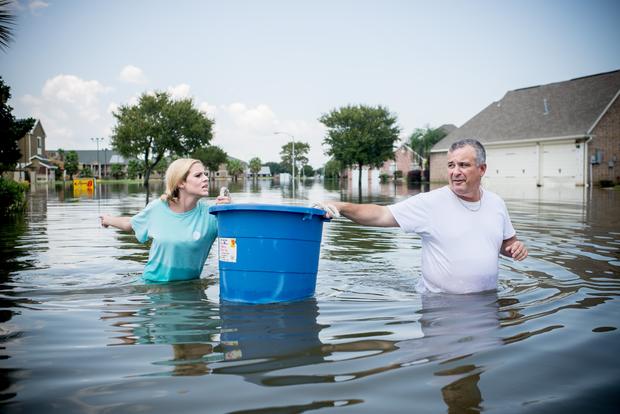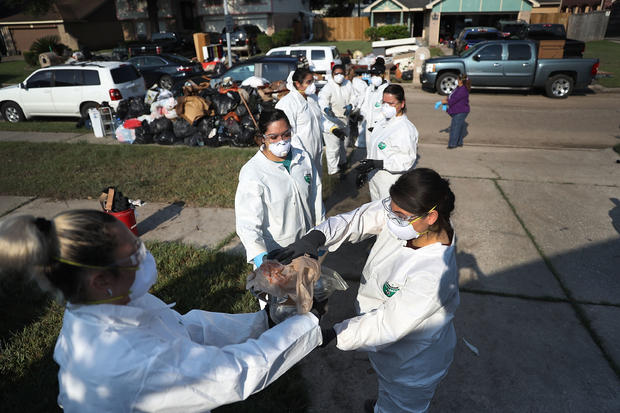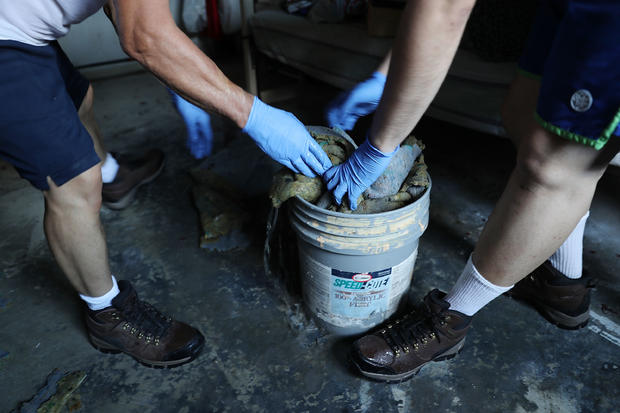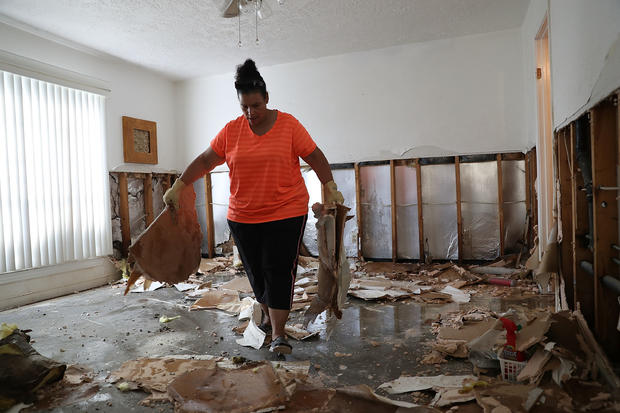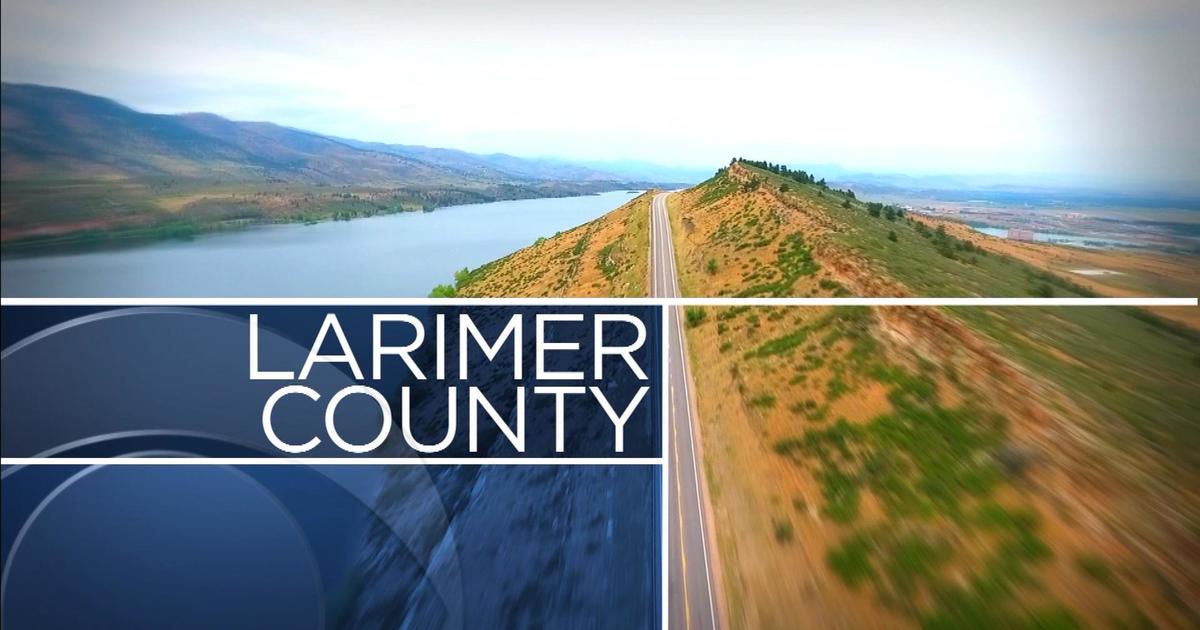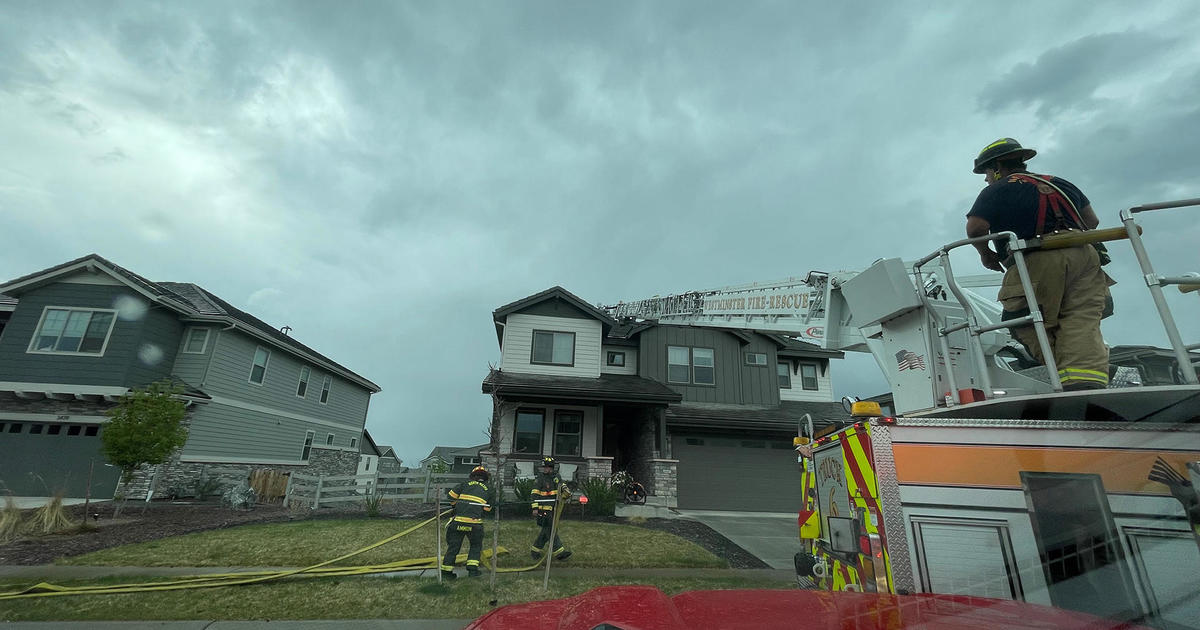AP: Toxic Waste Sites Flooded
HIGHLANDS, Texas (AP) — As Dwight Chandler sipped beer and swept out the thick muck caked inside his devastated home, he worried whether Harvey's floodwaters had also washed in pollution from the old acid pit just a couple blocks away.
Long a center of the nation's petrochemical industry, the Houston metro area has more than a dozen such Superfund sites, designated by the Environmental Protection Agency as being among America's most intensely contaminated places. Many are now flooded, with the risk that waters were stirring dangerous sediment.
(see response from EPA below)
The Highlands Acid Pit site near Chandler's home was filled in the 1950s with toxic sludge and sulfuric acid from oil and gas operations. Though 22,000 cubic yards of hazardous waste and soil were excavated from the acid pits in the 1980s, the site is still considered a potential threat to groundwater, and EPA maintains monitoring wells there.
When he was growing up in Highlands, Chandler, now 62, said he and his friends used to swim in the by-then abandoned pit.
"My daddy talks about having bird dogs down there and to run and the acid would eat the pads off their feet," he recounted on Thursday. "We didn't know any better."
The Associated Press visited five Superfund sites in and around Houston during the flooding. All had been inundated with water; some were only accessible only by boat.
EPA spokeswoman Amy Graham could not immediately provide details on when agency experts would inspect the Houston-area sites. She said Friday that EPA staff had checked on two other Superfund sites in Corpus Christi and found no significant damage.
"We will begin to assess other sites after flood waters recede in those areas," Graham said.
At the Highlands Acid Pit on Thursday, the Keep Out sign on the barbed-wire fence encircling the 3.3-acre site barely peeked above the churning water from the nearby San Jacinto River.
A fishing bobber was caught in the chain link, and the air smelled bitter. A rusted incinerator sat just behind the fence, poking out of the murky soup.
Across the road at what appeared to be a more recently operational plant, a pair of tall white tanks had tipped over into a heap of twisted steel. It was not immediately clear what, if anything, might have been inside them when the storm hit.
EPA Administrator Scott Pruitt has called cleaning up Superfund sites a priority, even as he has taken steps to roll back or delay rules aimed at preventing air and water pollution. President Donald Trump's proposed 2018 budget seeks to cut money for the Superfund program by 30 percent, though congressional Republicans are likely to approve a less severe reduction.
Like Trump, Pruitt has expressed skepticism about the predictions of climate scientists that warmer air and seas will produce stronger, more drenching storms.
Under the Obama administration, the EPA conducted a nationwide assessment of the increased threat to Superfund sites posed by climate change, including rising sea levels and stronger hurricanes. Of the more than 1,600 sites reviewed as part of the 2012 study, 521 were determined to be in 1-in-100 year and 1-in-500 year flood zones. Nearly 50 sites in coastal areas could also be vulnerable to rising sea levels.
The threats to human health and wildlife from rising waters that inundate Superfund sites vary widely depending on the specific contaminants and the concentrations involved. The EPA report specifically noted the risk that floodwaters might carry away and spread toxic materials over a wider area.
The report listed two dozen Superfund sites determined to be especially vulnerable to flooding and sea-level rise. The only one in Texas, the Bailey Waste Disposal site south of Beaumont, is on a marshy island along the Neches River. The National Weather Service said the Neches was expected to crest on Saturday at more than 21 feet above flood stage — 8 feet higher than the prior record.
In Crosby, across the San Jacinto River from Houston, a small working-class neighborhood sits between two Superfund sites, French LTD and the Sikes Disposal Pits.
The area was wrecked by Harvey's floods. Only a single house from among the roughly dozen lining Hickory Lane was still standing.
After the water receded on Friday, a sinkhole the size of a swimming pool had opened up and swallowed two cars. The acrid smell of creosote filled the air.
Rafael Casas' family had owned a house there for two decades, adjacent to the French LTD site. He said he was never told about the pollution risk until it came up in an informal conversation with a police officer who grew up nearby. Most of the homes had groundwater wells, but Casas said his family had switched to bottled water.
"You never know what happens with the pollution under the ground," said Casas, 32. "It filters into the water system."
His neighbor, Mary Ann Avila, was sobbing as she surveyed her waterlogged home across from the sinkhole. She said officials had sent her a letter warning her to have her well tested. She said her family hadn't had any health problems in the 17 years she's lived there.
"Even the man that drilled our well drank from it," said Avila, 39. "But we basically just bathe, wash our face and wash our teeth with it. But not drinking water."
At the Brio Refining Inc. Superfund site in Friendswood, southeast of downtown Houston, the water had receded by Saturday. There was a layer of silt on the road along with large muddy pools. A drainage ditch leading out of the fenced site was full and flowing into a nearby waterway.
The company operated a chemical reprocessing and refining facility there until the 1980s, leaving behind polluted soil and groundwater.
A few miles away, the San Jacinto River Waste Pits Superfund site was completely covered with floodwaters when an AP reporter saw it Thursday. According to its website, the EPA was set to make a final decision this year about a proposed $97 million cleanup effort to remove toxic waste from a paper mill that operated there in the 1960s.
The flow from the raging river washing over the toxic site was so intense it damaged an adjacent section of the Interstate 10 bridge, which has been closed to traffic due to concerns it might collapse.
There was no way to immediately access how much contaminated soil from the site might have been washed away. According to an EPA survey from last year, soil from the former waste pits contains dioxins and other long-lasting toxins linked to birth defects and cancer.
Kara Cook-Schultz, who studies Superfund sites for the advocacy group TexPIRG, said environmentalists have warned for years about the potential for flooding to inundate Texas Superfund sites, particularly the San Jacinto Waste Pits.
"If floodwaters have spread the chemicals in the waste pits, then dangerous chemicals like dioxin could be spread around the wider Houston area," Cook-Schultz said. "Superfund sites are known to be the most dangerous places in the country, and they should have been properly protected against flooding."
(© Copyright 2017 The Associated Press. All Rights Reserved. This material may not be published, broadcast, rewritten or redistributed.)
The EPA released this response Saturday afternoon:
Despite misleading and inaccurate reporting, the facts are that EPA and TCEQ are working together, along with other local, state, and federal authorities and emergency responders around the clock to address the human health and environmental impacts of Hurricane Harvey and its effects, especially historic and devastating flooding throughout Southeast Texas. With regard to the status of Superfund sites.
EPA has conducted initial assessments at 41 Superfund sites in the impacted areas using aerial images, as well as direct contact with the parties responsible for on-going cleanup activities. EPA has determined that 28 Superfund sites in the area do not currently show damage or excessive flooding associated with Harvey. EPA determined that 13 sites have been flooded and/or are experiencing possible damage due to the storm. Of these sites, two (Falcon Refinery and the Brine Service) have been inspected and it has been determined that they do not require emergency cleanup; although, additional sampling in the area will continue to be conducted.
Eleven sites, including: Bailey Waste Disposal, French LTD, Geneva Industries/Fuhrmann Energy, Gulfco Marine, Highland Acid Pit, Malone Services, U.S. Oil Recovery, Patrick Bayou, Petro-Chemical Systems, Triangle Chemical, and San Jacinto Waste Pits have not been accessible by response personnel. Teams are in place to investigate possible damage to these sites as soon flood waters recede, and personnel are able to safely access the sites.
The San Jacinto Waste Pits site has a temporary armored cap designed to prevent migration of hazardous material; the cap will be inspected as soon as it is safe for teams access the site. Based on forecasted river conditions, this inspection is planned for Monday, by boat. EPA has dive teams to survey the cap underwater when conditions allow.
EPA, TCEQ and other authorities will continue to provide additional updates as we gather them. We encourage the community to continue to follow the expert safety advice of local officials.
For additional information from TCEQ, please visit: https://www.tceq.texas.gov/response/hurricanes
